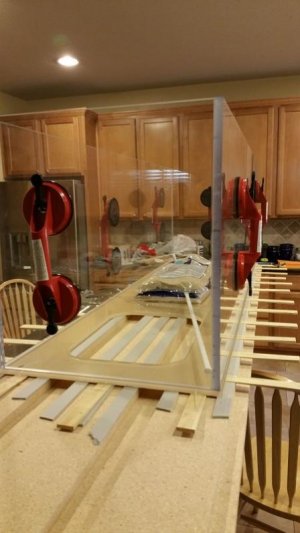silentscream
New member
Thanks for posting the breakdown of the process. Things went much smoother on my latest attempt. The only adjustment needed after pulling the pins was a little side to side, but hardly anything. I'll be surprised if I have to scrape any corners, everything feels nice a flat and ready for the bottom piece.
It's funny, after getting more comfortable with this acrylic process I'm looking around my system thinking, ok what else can I build with acrylic?
It's funny, after getting more comfortable with this acrylic process I'm looking around my system thinking, ok what else can I build with acrylic?

